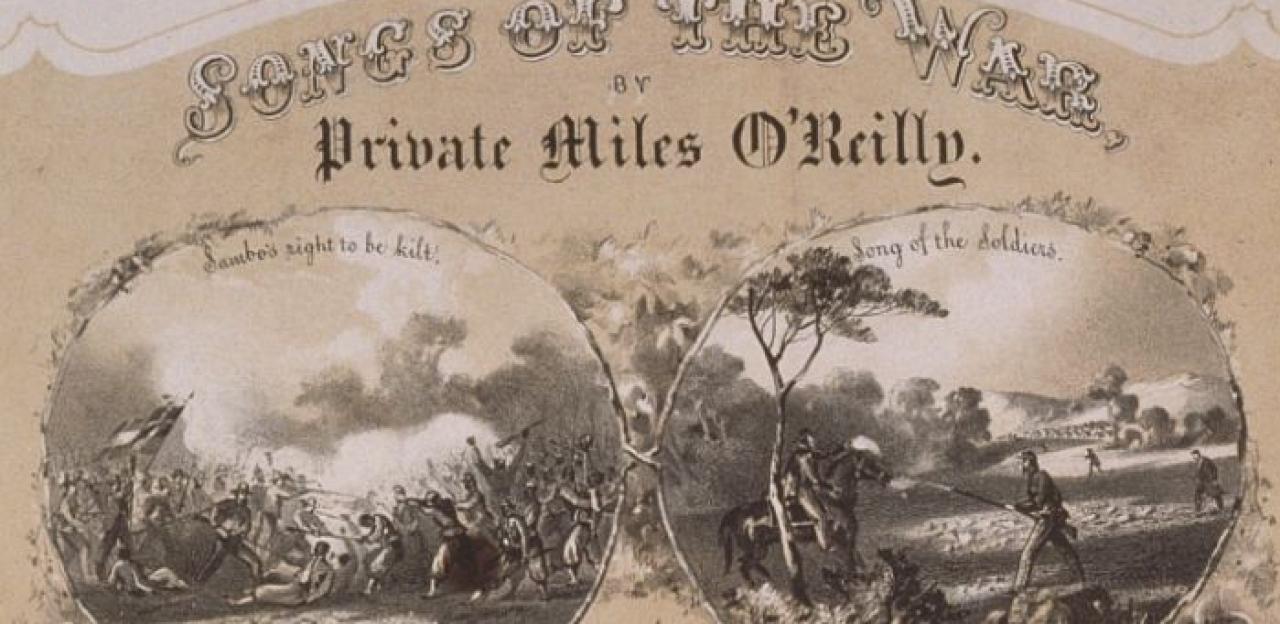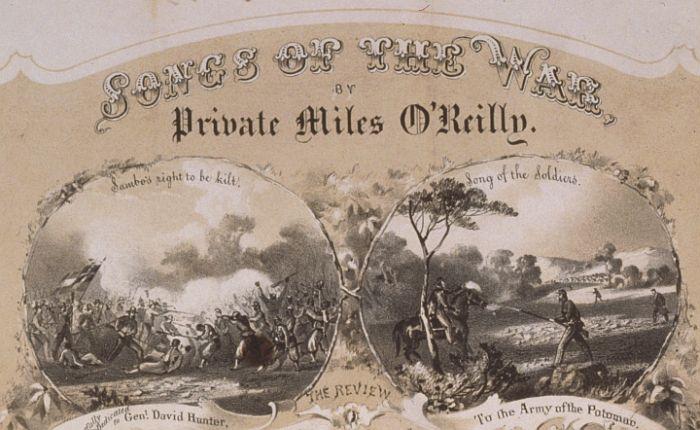Background Information for Civil War Songs

There were songs for entertainment, to lift morale, to give courage and to remind them of their loved ones at home. The night before the Battle of Stones River, after the bands had finished their usual evening serenade, Federal bands struck up slowly and softly “Home Sweet Home.” As the notes came through the stillness of the night, soldiers of both sides were wondering what tomorrow would bring: each soldier wondering if he would be wounded, or die, or if he would ever see home again. Then a Confederate band joined, and then another, until all the bands of each army were playing “Home Sweet Home.” This continued for some time until the bands one by one ceased playing and the sweet music faded away into the night.
Though the nation was bitterly divided, it was during this period that a distinctive national melodic style emerged. There was little difference in the music of the North and South. Most music was a mixture of foreign folk songs, gospel tunes, minstrel songs and Black spirituals. Identical melodies with different lyrics (parodies) could be heard on both sides. Copyright laws were different than they are today and those that existed were often ignored once the country divided.

There was no way to record and store sound during the Civil War. New songs were often learned by purchasing sheet music and singing it over and over again. Sheet music was as popular as CDs and tapes are today. A typical piece of sheet music in the 19th century was two, four, or six-page booklets. Illustrated front covers were prevalent by mid-century and the back page often contained advertisements. A song introduced by an attractive picture could make the music all the more interesting to the customer. Many times music was purchased because it had a battle scene, a general, or a beautiful woman on its cover.
A process called lithography, which uses chemicals and a block of limestone, was used to produce the drawings. Similar to a rubber stamp, a drawing was designed directly on the stone in reverse image and then treated so that ink only stuck to the image. Then it was “stamped” on the paper to produce the lithograph.


